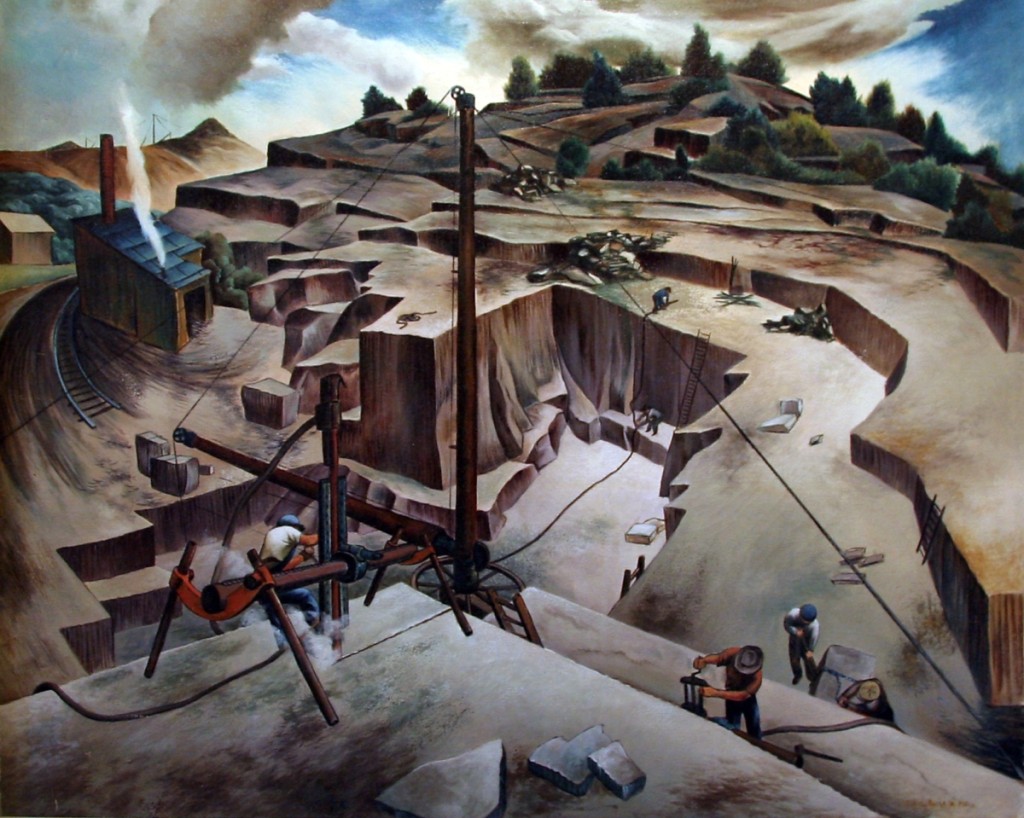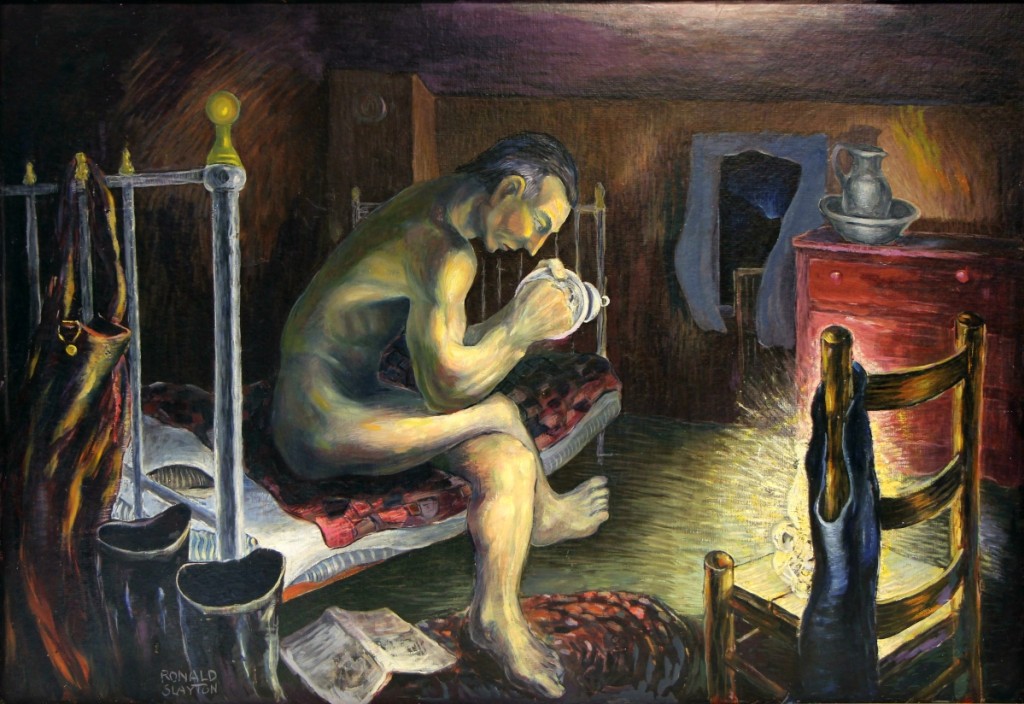
“Granite Quarry” by Francis Colburn (1909–1984), 1942, oil on canvas, 28 by 34 inches, collection of Robert Hull Fleming Museum, gift of Francis Colburn.
BENNINGTON, VT. – The days were dark as the stock market crash of 1929 took its toll on the country in the early 1930s. It has often been said that the Depression didn’t have much impact in Vermont. “Depression, what Depression?” was the quip. Vermont had always been a hard-scrabble place and the Depression just forced farmers and shop-keepers into a local barter-based economy. But the state of Vermont was not spared. Many of those in the towns, as well as those living by the land, saw their lives crumble before them.
However, 1934-1944 was also a time of immense creativity and innovation in the Green Mountain State. Artists, architects, writers, construction workers and civil employees, whose work was funded through Federal New Deal programs, helped to document the state’s history, record the conditions of contemporary life during the Depression and recovery, and build infrastructure that continues to benefit us today.
On view at the Bennington Museum to November 4, “Crash to Creativity: The New Deal in Vermont” sheds light on an under-studied aspect of Vermont’s history, focusing on the role of these many government sponsored New Deal projects. The exhibition includes furniture from Civilian Conservation Corps cabins, archival documentation of New Deal projects such as letters, as well as transcriptions of audio recordings of Vermonters created by the Federal Writers Project.

“Hired Man” by Ronald Slayton (1910–1992), circa 1937, oil on homasote, 33 by 47½ inches, collection of Robert Hull Fleming Museum.
The exhibition examines three thematic topics: Preserving the Past, Inventing the Present, and Building the Future. Bennington Museum collaborated with a handful of artists, through the state’s Federal Art Project, to create large-scale murals and easel paintings documenting local historical events and people of particular note. The resulting works included a 6-by-12-foot mural by Leroy Williams depicting the aftermath of the Battle of Bennington on view in the museum’s military gallery, and an easel painting depicting a visit to Bennington from Thomas Jefferson and James Madison in 1791: “Meeting at Fay’s Tavern, 1791.” These historical images, while carefully researched, tended to create a cohesive, white-washed picture of Vermont’s past.
However, artists like Francis Colburn and Ronald Slayton, two of the most significant native Vermont artists to participate in the Works Progress Administration’s Federal Art Project (FAP) produced bodies of work that are notable for their powerful sense of place and willingness to address important, sometimes difficult social issues. Much of their work was in line with the Regionalist subject matter popular with many artists working through the FAP, depicting typical Vermont people and landscapes.
Supported by programs funded through the New Deal, the creative and innovative work of artists, architects, writers, construction workers and civil employees, continues to benefit us today.
Bennington Museum is at 75 Main Street For information, www.benningtonmuseum.org or 802-447-1571.


.jpg)

.jpg)




